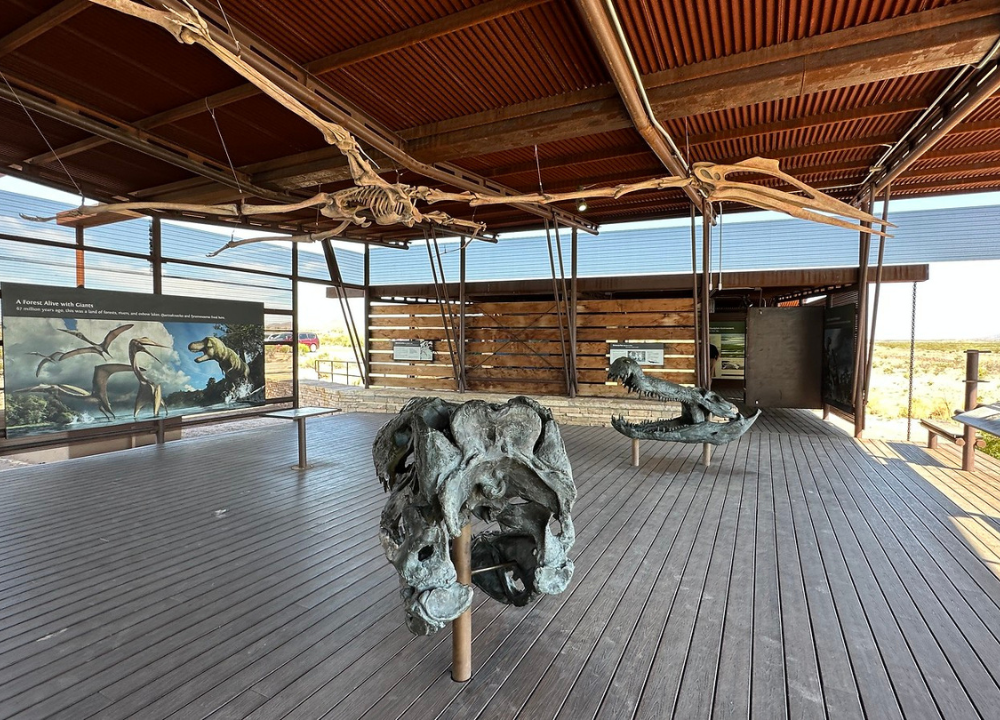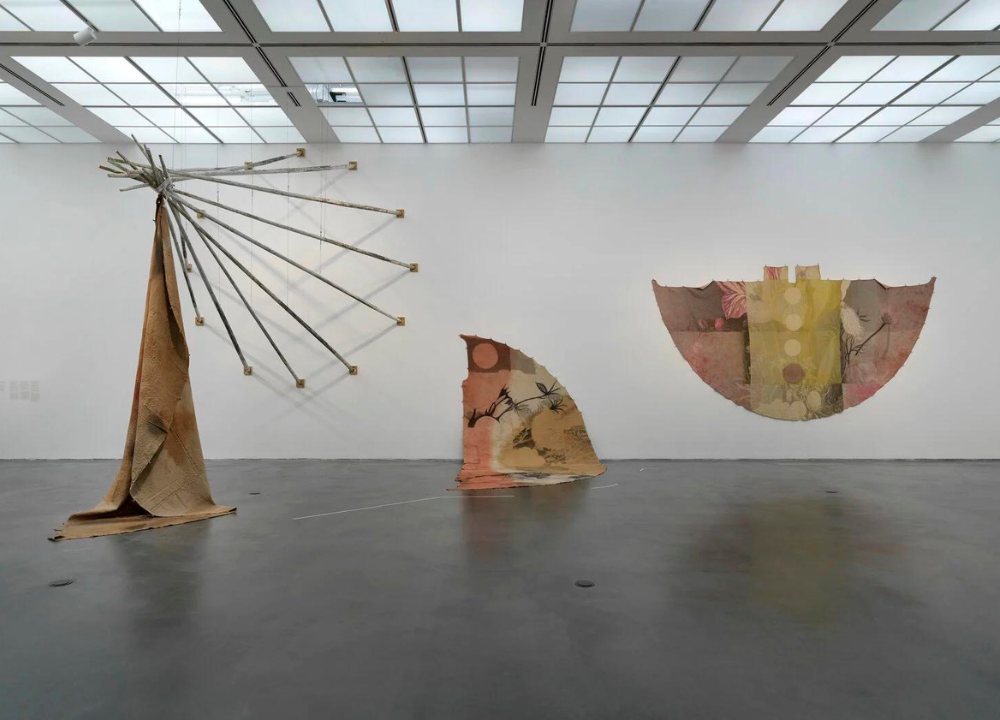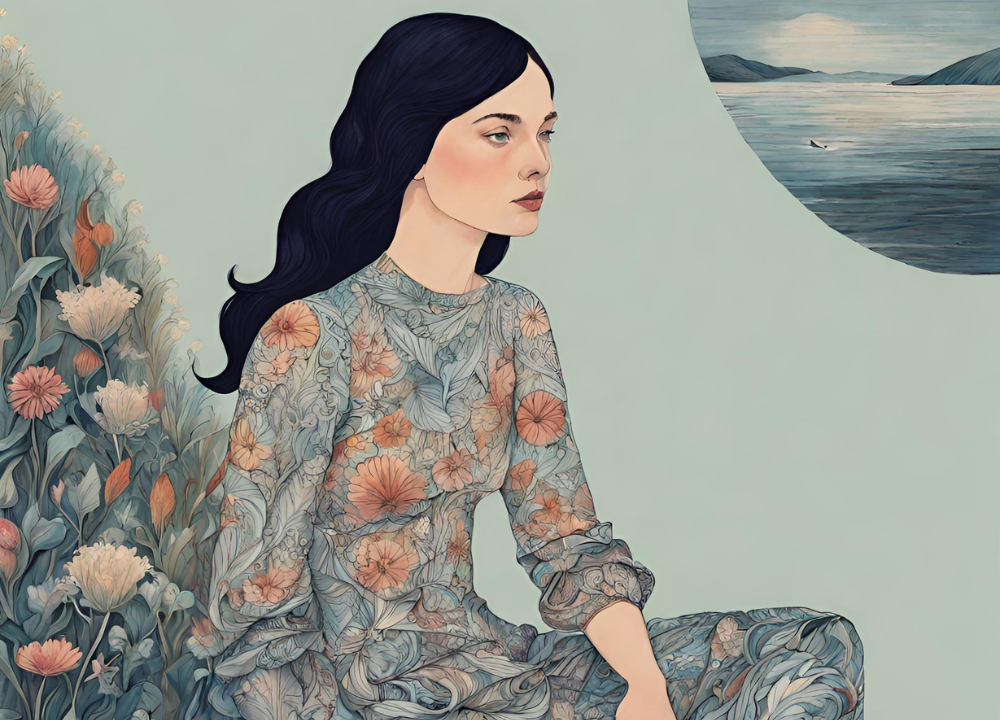Art has always been a mirror reflecting the times we live in. From the intricate details of Renaissance paintings to the bold colors of Pop Art, each style tells a unique story.
You may find yourself captivated by the elegance of classical techniques or the vibrant energy of modern expressions.
By the end, you’ll not only appreciate art more deeply, but you’ll also gain insights into how each style connects to the world around you. Get ready to see art in a whole new light!
Renaissance Revival
The Renaissance Revival, also known as the Neo-Renaissance, marks a significant return to the ideals of the original Renaissance. This movement began in the late 18th century and continued into the 19th century. Artists and thinkers sought to revive the classical themes and techniques of the Renaissance.
Key Figures And Works
Several key artists defined the Renaissance Revival. Their works reflect the movement’s ideals and innovations. Notable figures include:
- Jean-Auguste-Dominique Ingres – Known for his precise lines and classical themes.
- Gustave Courbet – A pioneer of realism, he focused on everyday subjects.
- Frédéric Leighton – Famous for his historical and mythological paintings.
Here are some significant works from this period:
| Artist | Artwork | Year |
|---|---|---|
| Jean-Auguste-Dominique Ingres | La Grande Odalisque | 1814 |
| Gustave Courbet | The Stone Breakers | 1849 |
| Frédéric Leighton | The Daphnephoria | 1876 |
These artists and their works played a crucial role in shaping the Renaissance Revival, merging classical ideas with contemporary themes.
Techniques And Innovations
The Renaissance Revival introduced various techniques and innovations. Artists focused on realistic representation. They studied light, shadow, and anatomy closely. This attention to detail added depth to their work.
- Use of Perspective – Artists applied linear perspective to create depth.
- Chiaroscuro – The contrast of light and dark enhanced realism.
- Oil Painting – This medium allowed for richer colors and textures.
These techniques helped artists convey emotions and narratives effectively. The revival also saw the rise of historical and mythological themes. Artists explored stories from ancient Greece and Rome. They sought to connect modern viewers with these timeless tales.
Cultural Impact
The Renaissance Revival had a lasting cultural impact. It influenced not only art but also literature and architecture. The movement encouraged a respect for classical education and philosophy.
- Art Education – Schools and academies emphasized classical techniques.
- Literature – Writers drew inspiration from classical themes and narratives.
- Architecture – Buildings featured classical columns and symmetry.
The revival led to a broader appreciation for the arts. Society began to value creativity and intellectual thought. It sparked movements that followed, including Impressionism and Modernism. The Renaissance Revival remains a vital part of art history, connecting past and present.

Baroque Brilliance
The Baroque period was a time of great emotion and energy in art. It followed the Renaissance and lasted from the late 16th century to the early 18th century. Baroque art is known for its drama, movement, and vivid detail. Artists used light and shadow to create a sense of depth.
Dramatic Expressions
Baroque art is famous for its dramatic expressions. Artists captured intense emotions in their work. They used bold colors and strong contrasts to enhance feelings. Here are some key features of dramatic expressions in Baroque art:
- Chiaroscuro: This technique uses light and dark to create depth.
- Dynamic Movement: Figures are often in motion, adding excitement.
- Theatricality: Scenes look like a play, full of action and tension.
Artists like Caravaggio and Rubens used these techniques to create masterpieces. Caravaggio’s work showed strong contrasts and emotional scenes. His painting “Judith Beheading Holofernes” is a perfect example. It captures a moment of tension and drama.
Famous Artists
Many artists defined the Baroque period. Here are some of the most notable:
| Artist | Notable Work | Nationality |
|---|---|---|
| Caravaggio | Judith Beheading Holofernes | Italian |
| Peter Paul Rubens | The Elevation of the Cross | Flemish |
| Rembrandt | The Night Watch | Dutch |
| Frans Hals | The Laughing Cavalier | Dutch |
Caravaggio’s work is known for its realism and emotional intensity. Rubens created large, energetic paintings that celebrate life. Rembrandt’s portraits reveal deep psychological insight. Each artist brought their unique style to the Baroque movement.
Influence On Architecture
The Baroque style did not only affect painting. It also had a huge impact on architecture. Baroque architecture is grand and decorative. It aims to impress and inspire awe. Here are some features of Baroque architecture:
- Curved Forms: Buildings often have curves and oval shapes.
- Opulent Decoration: Interiors are filled with rich details and colors.
- Illusionistic Effects: Artists painted ceilings to create the illusion of space.
Famous examples include St. Peter’s Basilica in Vatican City and the Palace of Versailles in France. These structures showcase the extravagance of the period. They reflect the power of the Church and the monarchy.
Rococo Elegance
The Rococo style emerged in the early 18th century, following the grandeur of the Baroque. It is known for its lightness, elegance, and exuberance. Rococo art is playful and charming, often depicting themes of love and nature. Artists used bright colors and intricate details.
Characteristics Of Rococo
Rococo art is distinctive and easily recognizable. It has several key characteristics:
- Light Colors: Soft pastels are common, creating a dreamy atmosphere.
- Ornate Details: Intricate designs with curves and scrolls dominate compositions.
- Asymmetry: Unlike the balanced forms of Baroque, Rococo favors playful asymmetrical arrangements.
- Themes of Love: Romantic and playful themes are prevalent, often depicting love scenes and mythology.
- Nature Motifs: Floral and natural elements appear frequently in backgrounds and decorations.
Rococo art often features elaborate decoration, especially in interiors. Here is a table that summarizes key characteristics:
| Characteristic | Description |
|---|---|
| Color Palette | Soft pastels and light hues |
| Design | Ornate, detailed, and asymmetrical |
| Themes | Love, playfulness, and nature |
The Rococo style invites viewers into a world of elegance and whimsy. Its characteristics make it a unique part of art history.
Notable Artists
Several artists stand out in the Rococo movement, each contributing to its rich legacy. They include:
- François Boucher: Known for sensual and romantic themes, often featuring women in pastoral settings.
- Jean-Honoré Fragonard: Famous for his playful and spirited works, such as “The Swing.”
- Antoine Watteau: His paintings often depict scenes of leisure and love, blending reality with fantasy.
These artists brought Rococo to life through their unique styles and techniques. Their works reflect the spirit of the time, showcasing elegance and beauty. Here’s a brief overview:
| Artist | Famous Work | Style Influence |
|---|---|---|
| François Boucher | “The Triumph of Venus” | Sensual and romantic |
| Jean-Honoré Fragonard | “The Swing” | Playful and spirited |
| Antoine Watteau | “Pilgrimage to Cythera” | Leisure and fantasy |
These artists have left a lasting impact on art, showcasing the charm of Rococo through their works.
Social Context
The Rococo style developed during a time of significant social change. The early 18th century saw the rise of the bourgeoisie and the decline of aristocratic power. People sought enjoyment and leisure in their lives.
- Shift in Power: Nobility lost some influence. The middle class began to thrive.
- Focus on Pleasure: Society valued leisure activities, leading to themes of love and nature in art.
- Increased Ornamentation: Wealthy patrons desired beautiful decor in their homes.
Rococo art reflects these changes. Artists catered to a growing audience that sought joy and elegance. The artwork often adorned salons and private rooms, showcasing the tastes of the time.
Neoclassicism
Neoclassicism emerged in the late 18th century as a response to the excesses of the Baroque and Rococo styles. It drew inspiration from the art and culture of ancient Greece and Rome. Artists sought to revive classical ideals of beauty, harmony, and proportion.
Return To Classical Ideals
Neoclassicism marked a return to classical ideals. Artists looked back at the ancient world for inspiration. They valued reason and order over emotion and chaos. This shift was a reaction against the flamboyant styles that preceded it. Key features of Neoclassical art include:
- Clear lines and forms: Neoclassical artists focused on structure.
- Balanced compositions: Harmony was essential in every piece.
- Mythological and historical themes: Many works depicted stories from ancient history.
Neoclassicism encouraged artists to create works that spoke to virtue and morality. Artists like Jacques-Louis David became leaders of this movement. They aimed to inspire and educate the public through their art.
Prominent Works
Several prominent works exemplify the Neoclassical style. These pieces reflect the key characteristics of this movement. Here are a few notable examples:
| Artist | Title of Work | Year |
|---|---|---|
| Jacques-Louis David | The Oath of the Horatii | 1784 |
| Jean-Auguste-Dominique Ingres | La Grande Odalisque | 1814 |
| Antonio Canova | Pauline Bonaparte as Venus Victrix | 1808 |
These works showcase idealized figures and strong narratives. They often include moral lessons or patriotic themes. Artists used their skills to create a sense of timelessness. This made the art resonate with viewers of their time and beyond.
Political And Social Influences
The rise of Neoclassicism was deeply connected to political and social influences. The late 18th century was a time of great change. The American and French Revolutions were reshaping societies. Neoclassicism reflected the ideals of democracy, reason, and civic duty.
- American Revolution: Artists celebrated independence and freedom.
- French Revolution: The movement emphasized themes of patriotism and sacrifice.
- Enlightenment: Intellectual movements promoted reason and scientific thought.
Artists used their work to comment on current events. They aimed to inspire citizens to engage in civic life. Neoclassicism became a tool for political expression. Through art, they communicated a vision of a better society based on classical virtues.
Romanticism’s Emotion
Romanticism emerged in the late 18th century as a reaction to the Enlightenment and industrialization. This movement celebrated emotion, nature, and individualism. Artists used vivid colors and dramatic scenes to express deep feelings. Romanticism’s emotion transformed art, making it more personal and passionate.
Themes And Subjects
Romanticism is rich in themes and subjects. Artists sought to capture the beauty and power of nature. They often painted dramatic landscapes, showing the raw forces of nature. The movement also focused on human emotion, depicting love, despair, and adventure. Common themes include:
- The beauty of nature
- The importance of individual experience
- Romantic love and longing
- Heroism and adventure
- The supernatural and the mysterious
Romanticism often featured historical events and figures. Artists portrayed these subjects with intense emotion. They aimed to evoke feelings in the viewer. A table below shows popular themes with examples:
| Theme | Example |
|---|---|
| Nature | Landscape paintings by Caspar David Friedrich |
| Love | Romantic scenes by Eugène Delacroix |
| Heroism | Scenes of battles by Francisco Goya |
Major Contributors
Many artists contributed to the Romantic movement. Each brought unique styles and perspectives. Some major contributors include:
- Eugène Delacroix: Known for his vibrant colors and dramatic subjects.
- Caspar David Friedrich: Focused on nature and human emotion in landscapes.
- J.M.W. Turner: Explored light and color in his atmospheric paintings.
- Francisco Goya: His works often reflected the darker sides of humanity.
These artists shaped the Romantic style. Their works still influence modern art today. Each artist expressed emotion in unique ways. They inspired countless others to explore human feelings and nature.
Impact On Literature And Music
Romanticism profoundly influenced literature and music. Writers and composers embraced the movement’s themes. They sought to express deep emotions and personal experiences. In literature, Romantic poets like William Wordsworth and John Keats focused on nature and human feelings.
- William Wordsworth: Celebrated nature and the beauty of everyday life.
- John Keats: Explored love, beauty, and mortality in his poems.
In music, composers like Frédéric Chopin and Johannes Brahms captured Romantic emotions. Their music resonated with the themes of the time:
- Emotion and passion
- Nature and the sublime
- Individual experience and identity
Romanticism’s impact is still felt today. It shaped how artists express deep emotions across all forms of art. The movement inspired new ideas that continue to inspire creativity.
Impressionism Revolution
The Impressionism Revolution marked a major shift in the art world. Emerging in the late 19th century, it moved away from traditional styles. Artists began to focus on capturing light and its effects on color. This movement emphasized feelings over details.
Innovative Techniques
Impressionist artists used several innovative techniques to express their vision. They aimed to capture moments in time rather than create detailed images. Key techniques included:
- Short, Quick Brush Strokes: This method created a sense of movement and spontaneity.
- Light and Color: Artists focused on how light affected colors in different settings.
- Plein Air Painting: Many artists painted outdoors to capture natural light.
- Unblended Colors: They placed colors side by side, allowing viewers to blend them visually from a distance.
These techniques set Impressionism apart from earlier styles. Artists like Claude Monet and Pierre-Auguste Renoir explored new perspectives. Their work emphasized the beauty of fleeting moments.
Famous Impressionists
Several artists became famous for their contributions to the Impressionism movement. Here are some key figures:
| Artist | Notable Works | Contribution |
|---|---|---|
| Claude Monet | Water Lilies, Impression, Sunrise | Focus on light and color |
| Pierre-Auguste Renoir | Luncheon of the Boating Party, Dance at Le Moulin de la Galette | Emphasis on joyful scenes |
| Edgar Degas | The Ballet Class, The Absinthe Drinker | Unique compositions and angles |
| Camille Pissarro | The Boulevard Montmartre, The Harvest | Focus on rural life |
These artists pushed boundaries. Their work inspired future generations. They showed that art could express emotion and experience. Their legacy remains strong.
Legacy And Criticism
The legacy of Impressionism is vast. It influenced many art movements that followed. Artists began to explore abstraction and expressionism. Yet, Impressionism faced criticism in its early days. Traditionalists dismissed it as unfinished or chaotic.
Key points about its legacy and criticism:
- Influence on Modern Art: Impressionism opened doors for abstract art.
- Changing Perceptions: It changed how people viewed art and its purpose.
- Initial Criticism: Critics labeled it as lacking skill.
- Recognition Over Time: Many Impressionist works are now celebrated and valued.
Impressionism remains a crucial part of art history. Its impact continues to be felt in galleries worldwide. This movement taught people to appreciate the beauty in everyday moments.




